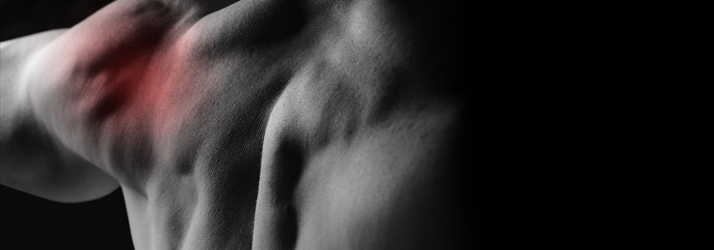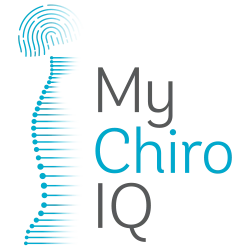Shoulder Pain in Mt Pleasant SC?

We don't think much about our shoulders until they start to give us pain. Most people immediately start looking for chiropractic care in Mt Pleasant SC because they are always using their shoulders to lift and extend their arms, carry, wave, and perform numerous other motions and tasks. The shoulder is the most mobile joint in the body and as a result, it is subject to a wide range of injuries and conditions.
Shoulder problems that go unchecked can lead to lifelong, debilitating issues. In order to properly treat the shoulder joint and achieve long-term relief, it is important to identify the cause of shoulder pain. This article explains some of the common causes of shoulder pain and how chiropractic care can return the shoulder to functional health.
Shoulder Pain Treatment in Mt Pleasant SC
The causes of shoulder pain are seemingly endless, but let's go over some of the more common causes of pain in the shoulder. Shoulder pain may be the result of conditions, such as:
- Neck and upper back tightness
- Spinal misalignment
- Arthritis
- Abnormal patterns of movement
- Athletic injuries and automobile accidents
While a few of the items on this list may indicate localized swelling in the shoulder joint, more of them point to the spine as the probable source of pain. The nerves that control the shoulder originate in the spine. If the vertebrae around the neck and upper back are compressed or injured, the nerves that go to the shoulder will be irritated and cause pain. Even a minor spinal misalignment can interrupt communication between the nerves and the shoulder and a cascade of problems can begin. So, what appears as shoulder pain may actually be referred pain from the spinal column.
Rotator Cuff Tears/Rotator Cuff Injury
The rotator cuff consists of four small muscles that surround the joint and are responsible for stabilization of the joint as the shoulder moves. Common symptoms include feeling like your shoulder will dislocate, burning, dull/achy, or sharp shoulder pain with movement. These muscles are injured very easily and are essential to reduce the small arthrokinematic motions of your arm as you move which cause pain.
Rotator cuff injuries and tears tend to respond very well to active treatments such as physical therapy with a focus on improving the activation and strength of the non-injured muscles to compensate for the injured muscles. At least one bout of therapy is recommended prior to surgery due to the high success rate of therapy.
Shoulder Bursitis
Bursas are fluid filled sacs located throughout the body and are responsible for providing lubrication between muscles and skin. Typically through impact or repetitive movements, a bursa will become inflamed and will be very tender to the touch.
Bursitis tends to be characterized as pinpoint pain that is dull or achy at rest and sharp during aggravating movements or when there is pressure over the bursa.
Bursitis responds well to manual techniques and application of modalities as well as fixing movement faults to reduce the overall amount of stress placed on the inflamed bursa. Bursitis also tends to respond well to passive treatments such as cortico-steroids shots to reduce inflammation in conjunction with active treatments.
Shoulder Tendonitis
Shoulder tendonitis is an overuse injury of muscles around the shoulder. The muscles of the shoulder that commonly develop a tendonitis are the rotator cuff and biceps tendons but it can affect any muscle in the shoulder.
Tendonitis is aggravated with movement and activation of the muscle and is treated through a period of rest to reduce inflammation followed by neuromuscular re-education and strengthening to reduce the risk of recurring tendonitis.
Modalities such as ice, electric stimulation, and grade IV laser are great treatments to reduce inflammation.
Frozen Shoulder
Frozen shoulder is an idiopathic (meaning no specific cause) cause of a reduction in shoulder range of motion.
Frozen shoulder is characterized as three distinct periods: freezing, frozen, and thawing. In the freezing period the shoulder is gradually losing motion; the frozen period is when the shoulder is most limited; the thawing period is when the shoulder begins regaining motion.
Symptoms include a lack of range of motion and intense pain at end range motion. Therapy is useful at stretching out the muscles and the capsule of the shoulder joint to regain motion.
Shoulder Impingement Syndrome
Shoulder impingement is classified as pinching of the tendons and bursa being caught between the bones of the shoulder. Shoulder impingement is aggravated with repeated overhead movements.
Shoulder impingement tends to have position specific shoulder pain and is commonly pain in the front of the shoulder but could also be back of the shoulder pain.
Shoulder impingement syndrome is commonly treated in therapy with improvements in posture and shoulder position through specific stretching and strengthening protocols.
Manual treatment to reduce muscle spasms to improve the mobility of the various joints that make up the shoulder.
Shoulder Instability
Shoulder instability is characterized as a positioning issue of the head of the humerus (ball) into the shoulder (socket) joint. There is an increase in motion of the shoulder joint. This increase in motion can be related to an injury to the capsule, the ligaments, the labrum and/or the muscles of the shoulder joint creating this instability.
Shoulder instability usually causes generalized pain throughout the joint. Therapy services can vary depending on what is causing the shoulder instability but general strengthening of the muscles surrounding the joint to maintain active stability is important to reduce shoulder instability.
Labrum Injuries
The labrum is a piece of tissue that sits within the socket of the ball and socket shoulder joint. This labrum is used to deepen the socket and create more stability of the shoulder.
The most common labrum injury is a SLAP (superior labrum anterior to posterior) tear but additional injuries include BANKART and reverse BANKART. Hills Sachs lesions may be present if a shoulder dislocation happened.
Labrum injuries are commonly associated with shoulder instability and are treated by strengthening the rotator cuff muscles to reduce the level of shoulder instability. The stronger the rotator cuff muscles are, the less stress is placed on the labrum.
Fractures
Fractures of the shoulder usually consist of humerus fractures or collarbone fractures.These fractures are usually associated with a fall or some sort of forceful impact.
High energy sports such as football, basketball, soccer, gymnastics, baseball and recreational sports such as skiing/snowboarding to name a few have higher levels of fractures.
Healing of a fracture is typically associated with a 6 week healing period either in a brace, sling, or cast. Therapy following a fracture is important to regain the strength and neuromuscular activation associated with muscle wasting/muscle atrophy.
AC Joint Injury
An acromioclavicular joint injury is an injury where the collarbone meets the front of the shoulder. The most common AC joint injury would be an AC joint sprain.
An AC joint sprain comes in three levels and is based on how bad the ligaments of the AC joint are stretched out or damaged with a grade III being a complete tear of the ligaments.
A step down deformity (a bump on the top of your shoulder) is the most common sign of an AC joint injury. Sharp pain with movement, when putting pressure through your arm, when trying to lift objects, or sleeping is common following an AC joint injury.
Therapy following an AC joint injury is very successful and will include some of the following: manual treatments muscles and joints, modalities to reduce pain, grade IV laser to reduce inflammation, application of kinesio tape (KT tape) to improve joint positioning, and exercises to improve joint stability.
Shoulder Dislocation
A shoulder dislocation is an injury that is usually resulting from some sort of forceful impact or fall and will typically result in injuries to the rotator cuff, the labrum, and various other tissues throughout the shoulder joint.
Shoulder dislocations, depending on the severity, may need to be relocated by a medical professional while others may relocate themselves on their own.
A shoulder dislocation initially requires small muscle stabilization work to reduce the chance of additional dislocation and then more intensive strengthening is required to return to the sports or activities the person is used to performing.
Shoulder Stinger or Shoulder Burner
Shoulder burners and stingers are injuries that occur when nerves in the neck and shoulder are stretched or compressed after an intense impact. These injuries are common in contact or collision sports, and are named for the stinging or burning pain that spreads from the shoulder to the hand. A burner or stinger can feel like an electric shock or lightning bolt down the arm from the nerve being aggravated and usually resolve within a few days. Burning, stinging or pain that persist more than a few days may require treatment to reduce pressure on the nerve.
What To Do Next…
If you’re currently experiencing any of these symptoms and would like to learn more about how we can help, My Chiro iQ Chiropractic happily welcomes you for a complimentary consultation with Dr. Ross to determine what will be the recommended course of action for you. After an examination, he can provide an individualized approach to the root of the problem.
Call for your appointment today! (843) 766-4444
OFFICE HOURS
Monday
1:00pm - 6:00pm
Tuesday
8:00am - 5:00pm
Wednesday
8:00am - 5:00pm
Thursday
8:00am - 5:00pm
Friday
Closed
Saturday & Sunday
Closed
My Chiro iQ
419 Hibben St
Mt Pleasant, SC 29464



